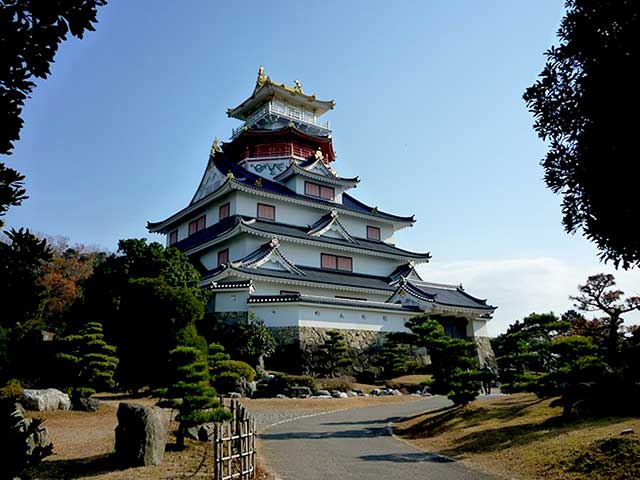
Azuchi Castle, inspired by the design of Komakiyama Oda Nobunaga’s initial fortress, boasted a distinctive feature that defied conventional defensive tactics: a grand, wide stone-lined Otemichi stairway leading directly to the base of the central Honmaru enclosure. This seemingly inviting approach, devoid of the usual winding paths meant to impede attackers, hinted at Nobunaga’s confidence, almost daring any potential adversary to challenge him.
Despite its appearance, the main stairway posed significant challenges for assailants. Its steep incline and unusually high steps made ascent arduous, especially for individuals of the Sengoku period’s average height, laden with heavy armor and weaponry, amidst defending forces raining fire from walls and yagura positioned along the steps. Flanking this ascent were the residences of Nobunaga’s most trusted retainers, each accompanied by elite samurai guards, further bolstering Azuchi’s defenses.
Atop the castle stood a magnificent tower keep, soaring seven stories high and reputedly the world’s largest wooden structure at the time. Its imposing exterior, adorned with white plaster and black lacquered panels, culminated in a roof tiled with gold-plated kawara tiles. Symbolically, the tower’s design blended elements of heaven, Taoism, and Confucianism, embodying Nobunaga’s grandeur and philosophical influences.
Internally, Azuchi Castle resembled European churches, with vaulted ceilings soaring up to 20 meters through the central structure. Nobunaga’s architectural vision, possibly influenced by visiting missionaries or colossal Buddhist temples, resulted in a unique, opulent edifice supported by formidable stone walls. Within its confines, Nobunaga resided in lavish quarters, including a Noh stage and a tea room adorned entirely in gold leaf.
Legend has it that during the castle’s construction, Nobunaga ingeniously overcame stone supply shortages by compelling samurai to contribute stones, including his father’s gravestone, integrated into the fortress walls. Okabe Matazaemon and his team of carpenters then erected the towering structure, completing the project in under three and a half years.
Azuchi Castle quickly became a national spectacle, particularly during summer evenings when lanterns illuminated its towering presence, captivating the populace. Nobunaga’s ambition to unify Japan under his rule seemed within reach until tragedy struck in June 1582. A treacherous betrayal by General Akechi Mitsuhide led to Nobunaga’s demise at Honno-ji Temple in Kyoto, followed by Azuchi’s destruction at the hands of Akechi’s forces.
Though rumors abound regarding the castle’s fiery end, Azuchi’s legacy lives on through its extensive stone walls, a testament to Nobunaga’s towering ambitions. Models of the castle can be viewed at the Nobunaga no Yakata Museum in Azuchi or experienced firsthand at the life-sized replica in Mie Prefecture’s Ise Sengoku Mura theme park.
See also
-
Okayama Castle
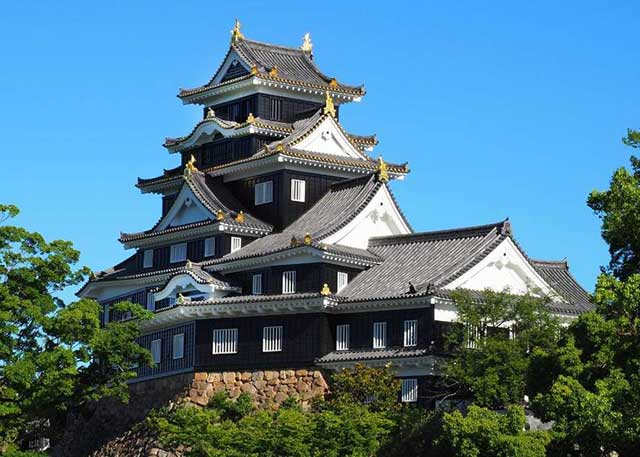
According to a number of accounts, the earliest fortifications on the site of present-day Okayama Castle appeared as early as the 14th century and were built by the Nawa clan. The Asahigawa River was used as a natural defensive barrier, protecting one side of the fortifications.
In the early 16th century, the Kanamitsu clan constructed a new castle here, which at the time was known as Ishiyama. In 1573, it came under the control of the Ukita clan, after which Ukita Naoie (1529–1582) launched large-scale reconstruction efforts. He did not live to see the work completed, and construction was continued by his son Hideie. -
Nagahama Castle
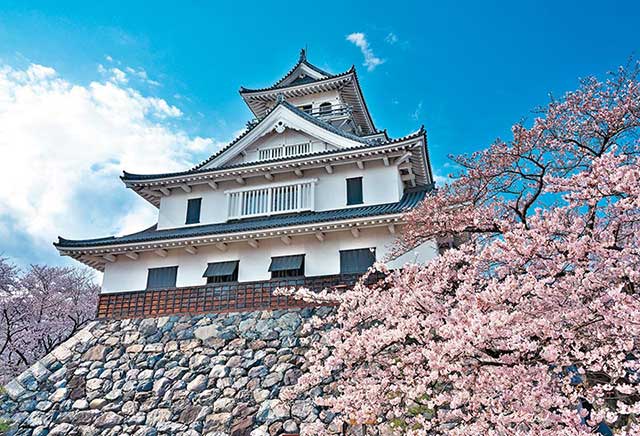
Hashiba, later known as Toyotomi Hideyoshi, received Odani Castle and the surrounding lands from Oda Nobunaga after the defeat of the Azai clan. However, Odani Castle was located high in the mountains, which made it poorly suited for the effective administration of the territory. For this reason, in 1575 Hideyoshi began constructing a new castle in the village of Imahama on the shore of Lake Biwa. Taking the character naga from Nobunaga’s name, he renamed both the village and the new castle Nagahama.
-
Kokura Castle
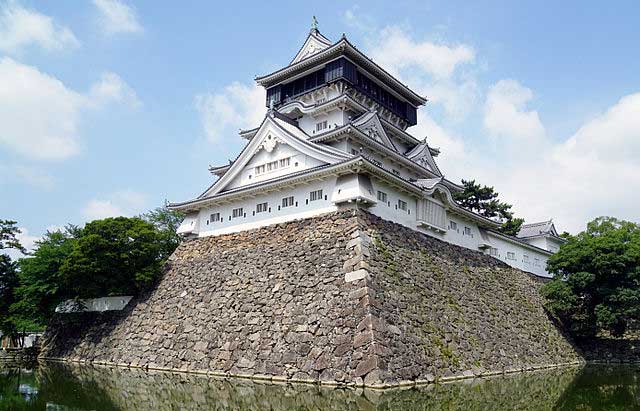
Kokura Castle is traditionally considered to have been founded by Hosokawa Tadaoki (1563–1645), although by the time the Hosokawa clan came to control these lands, the fortification had already existed since at least 1569 and was most likely built by members of the Mori clan.
-
Ikeda Castle
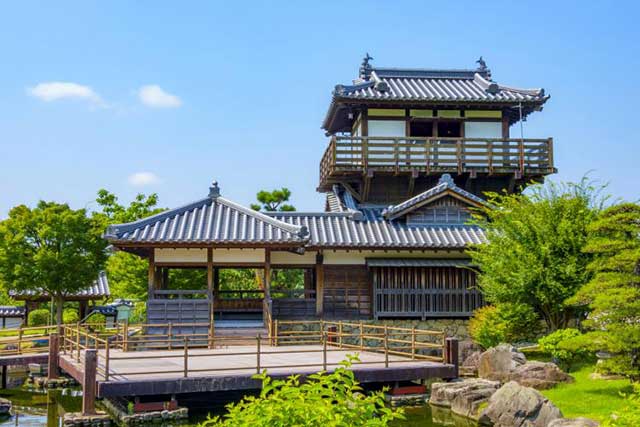
In 1334, Ikeda Noriyoshi built a small fort on this site, which over time was repeatedly expanded and rebuilt. During the Ōnin War of 1467–1477, the Ikeda clan supported the Western Coalition. As a result, Ikeda Castle was attacked and captured by the forces of the Eastern Coalition, but it was soon recaptured, allowing it to avoid serious destruction.
-
Aizu-Wakamatsu Castle
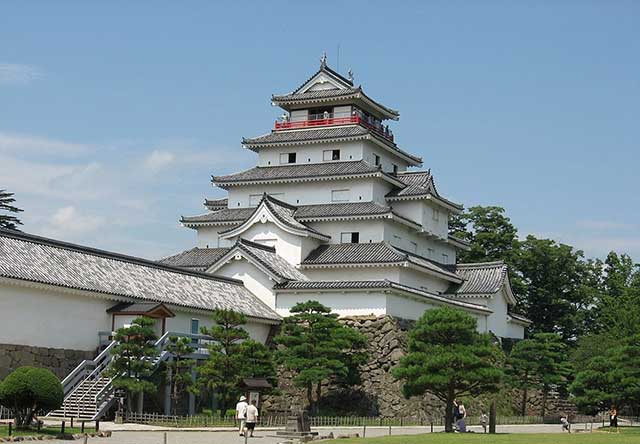
Aizu-Wakamatsu is the most powerful and at the same time the oldest castle in the Tōhoku region in the north of Honshu Island. Its history begins in the 14th century and is closely connected with the Ashina clan, whose members claimed descent from the legendary Taira family.
-
Maruoka Castle
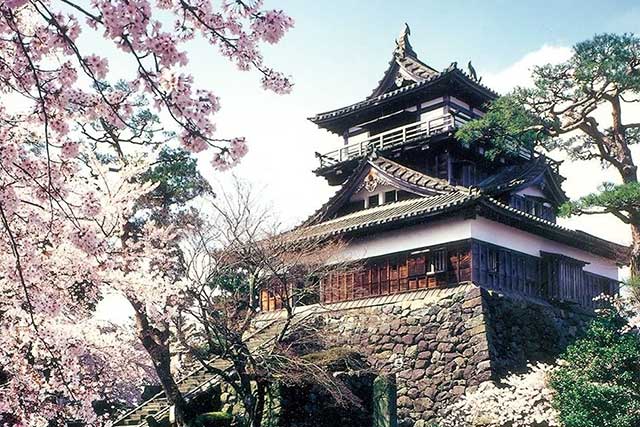
Maruoka Castle is located in the central part of the former city of Maruoka, which is now part of the city of Sakai. This area lies in the northeastern part of Fukui Prefecture. The castle was built on the bank of the Kuzuryu River, on the side opposite Fukui City, which once served as the administrative center of the former Echizen Province. Thanks to its location, Maruoka held significant strategic importance, as it controlled two major routes at once: the Hokurikudo highway leading from Kaga Province and the Mino Kaido road connecting these lands with Mino Province.
-
Marugame Castle
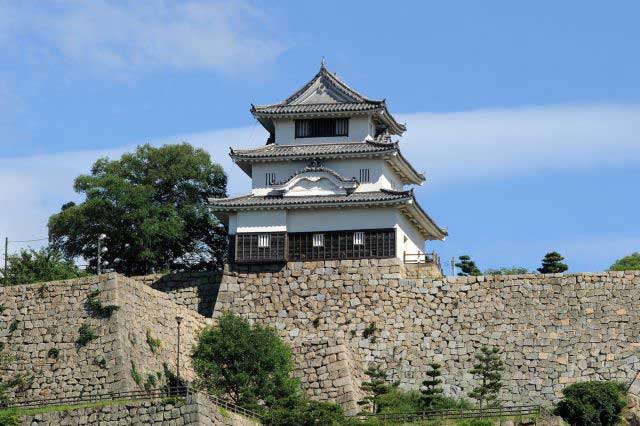
Marugame is part of the so-called “Authentic Dozen,” a group of twelve castles whose donjons have survived to the present day without major reconstructions since the Edo period.
-
Iyo Matsuyama Castle
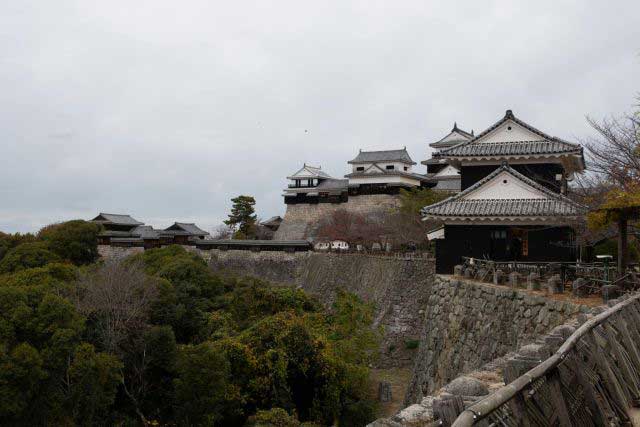
Historically, the center of Iyo Province—corresponding to today’s Ehime Prefecture on the island of Shikoku—was the city of Imabari, while the Matsuyama area was regarded as an agricultural hinterland with broad plains and low hills. During the Muromachi period, the central part of the province was governed by the Kano clan from Yuzuki Castle. With the onset of the Sengoku period, however, this clan lost its former influence and was forced to survive in the shadow of the more powerful Mori and Chōsokabe clans. After Toyotomi Hideyoshi’s forces conquered Shikoku in 1587, the northern part of Iyo Province was granted to Fukushima Masanori, one of the so-called “Seven Spears of Shizugatake.” In 1595, Masanori was transferred to Kiyosu Castle, and the lands around Matsuyama were given to another of the Seven Spears, Katō Yoshiaki, who received Masaki Castle and an income of 60,000 koku of rice.

